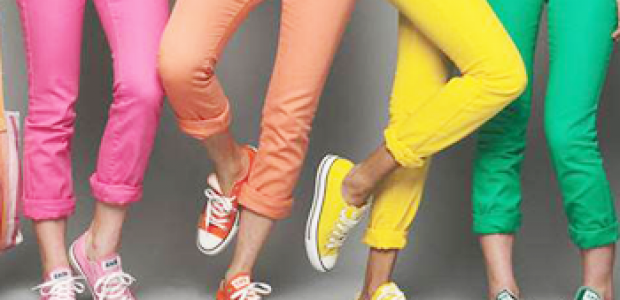Chinos are, unmistakeably, military trousers. They are functional, sturdy and reliable. In their purest form chinos are made of 100% cotton twill cloth – that is a weave with small diagonal ridges – and are khaki in colour. They are flat-fronted, parallel or slightly tapered legs, with slanting side pockets and one or two back pockets.
The mass of cheap army surplus after WW2 meant that chinos were picked up, along with blue jeans, as the uniform of the new consumer group of teenagers in the US. The pale brown cotton pants became an essential ingredient of the preppy look. Unlike denims, they were both casual and smart. Fifty years later, and sometimes in somewhat changed formats, they are still a wardrobe essential.
But it would be wrong to think of chinos as just being a phenomenon of the second half of the 20th century. In fact, their origins go back to the mid- and late 19th century. In 1848 a British Army officer called Harry Lumsden decided the Corps of Guides he commanded on the north-west frontier between India and Afghanistan would be more suitably dressed in drab-coloured clothes rather than bright red tunics and white trousers. Using local knowledge, the cotton cloth of the uniforms was dyed in mulberry juice and the resulting drab yellowish shade was called khaki, after the Hindi or Urdu word for dust.
From 1848, Indian or British troops wore khaki uniforms in the area and the practice was followed as the British Army as they fought for Queen Victoria and Empire in dusty campaigns such as Abyssinia (now Ethiopia) in 1867-68. Khaki was adopted as battledress colour in 1897 and by the Second Boer War in 1899-1902 the British Army were known as “Khakis”.
Other military forces were quick to appreciate the camouflage qualities of the dull light brown shade. In the short Spanish-American war of 1898 – it was only four months long – the US army occupied the Philippines and returned singing the praises of khaki-coloured trousers they called chinos. There are various theories why the Americans should have given these cotton pants a corruption of the Spanish name for “Chinese” or “China”. Some say it was because the twill cloth was woven in China. Another version says that the pants themselves were made in China. A more fanciful explanation is that some US soldiers had their pants made by Chinese tailors in the Spanish colony.
In any case, the comfortable and hard-wearing khaki chinos had proved their worth. They were adopted as an official US Army uniform in 1902. The utilitarian appeal of these reliable uniforms was soon picked up by the general public. In the US at least the terms “khakis” and “chinos” became interchangeable and remain so today. Levi’s introduced a line of “khakis” as early as 1906. Preppy palace Brooks Brothers started selling chinos as early as 1942. In the Second World War, US officers’ chinos were made of a quality known as Cramerton cloth – Levi’s used the same cloth for a line of post-war preppy pants.
More than 100 years later, the appeal of this basically simple pant with no pleats, a zip or button front, and straight or slightly legs is stronger than ever. For spring/summer 2012 Duchamp has re-interpreted this menswear classic in several tantalising ways. We are using fine Italian cotton for our pants in a superb range of colours from white and navy to yellow and purple. Make them part of your spring/summer uniform this year. You cannot argue with a classic.





Comments
Leave A Comment